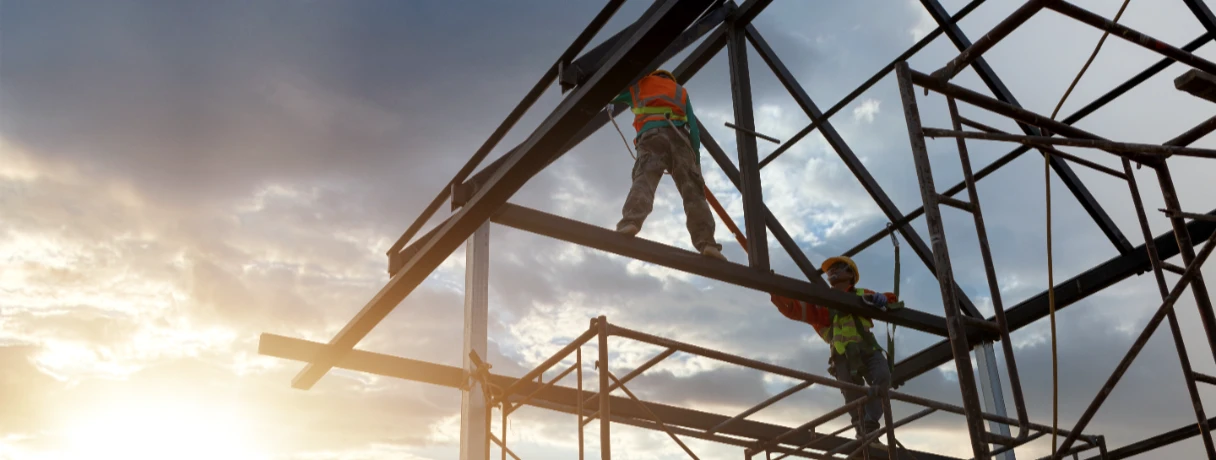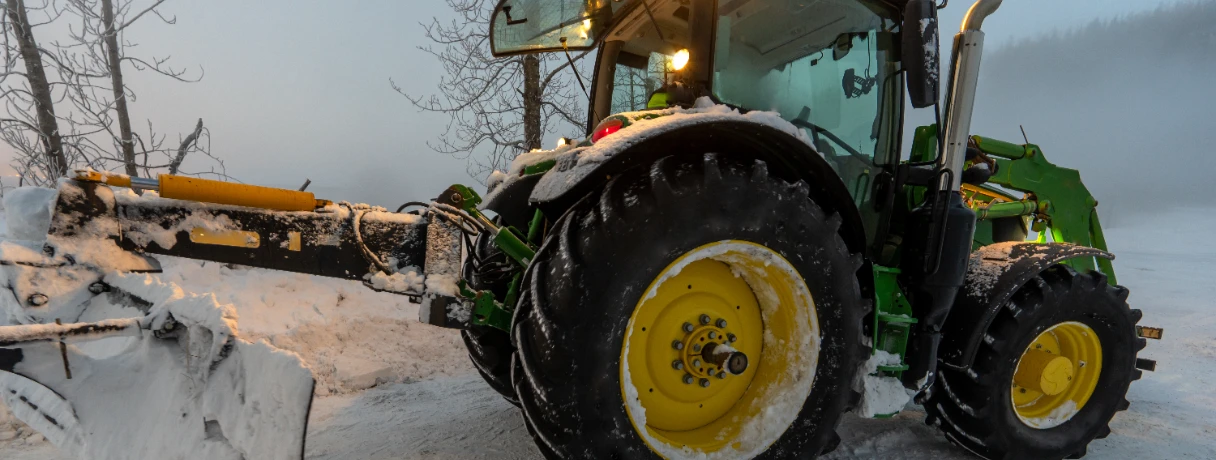Takeoffs are the backbone of every accurate bid. If your quantities are off, your estimates, schedules, margins, and win rates fall apart. In a market where precision and turnaround time define competitiveness, choosing the right takeoff platform is no longer optional—it’s strategic.
This guide breaks down what takeoff software breaks down what takeoff tools do, how they’ve evolved, how they fit into a modern estimating workflow, and how to evaluate the best solution for your team. Whether you’re an estimator, GC, or subcontractor, consider this your practical full guide to construction takeoffs and a clear roadmap for selecting high-impact digital takeoff tools.
What Is Takeoff Software?
Takeoff software automates or assists the measurement and material quantification process during preconstruction. It extracts quantities directly from project plans and forms the foundation for the next stage—estimation.
Accurate takeoffs help you:
- Build precise budgets
- Avoid material waste
- Reduce costly mistakes
- Improve bid competitiveness
- Strengthen project profitability
Without reliable quantities, you risk overbidding, underbidding, and misaligned procurement. All of which hurt margins.

Overbidding vs. Underbidding: The Hidden Costs
Overbidding - Let's say your proposal is around $ 20,000 for a project. However, other contractors are submitting a proposal for $ 15,000. Your chance of winning the project becomes small as others are providing their services at a lower rate unless you can justify the bid amount.
Underbidding - Assume you came up with material and quantity takeoff on your own by doing mental math and a calculator. This estimation can be incorrect due to manual errors, and you can end up suggesting fewer materials than expected to prospects, thereby impacting profit margin.
Important Note:
Takeoff is vital to determine the exact amount of materials to order for a project. Knowing this will save you from project delays, missing revenue targets, legal issues, and reputation loss.
The Takeoff Story So Far…

Most construction companies have estimators to do takeoffs.
They are highly skilled individuals who specialize in understanding a blueprint and know how to trace accurately and calculate site measurements from it.
How Takeoffs Have Evolved?
- Manual Takeoffs - Pen & Paper: Initially, estimators were heavily dependent on manual takeoffs, where they would take the printout of an electronic print. Then, trace on top and draw boundaries and polygons. Estimators had to depend heavily on calculators and mental math to detect the type of construction materials like bricks, plastics, concrete, etc, and their coverage quantity. Eventually, the manual takeoff procedure became archaic and error-prone.
- Manual Takeoff Software: With technology, manual takeoff software came into the picture. To use this, one needs to do a lot of clicking and dragging on the electronic plan. Once this activity is over, the estimators will get an electronic report on the number of materials and their quantity.
- Semi-Automated Takeoff Software: Then came the semi-automated takeoff software, which tried to remove some pressure from the estimators by automating nearly 30% of takeoff activities. For the rest, estimators had to sit and trace on a plan.
- AI-Based Fully Automated Takeoff Software: With AI-based, fully automated construction takeoff software, all you need to do is upload your project plans. The takeoff software then automates the entire process—delivering faster, more accurate quantity takeoffs without any manual effort. This eliminates human error and boosts estimating efficiency at scale.
How to Choose the Right Takeoff Software?

The million-dollar question: How efficient is my takeoff software?
We understand your concern, as a study shows that inefficient software can cause overspending of nearly $40 billion per year.
Here are a few points on which you can decide on the takeoff software’s efficiency:
- Saves Time on Takeoff: Did you know that 40–50% of the bidding cycle is spent on manual takeoffs? With Beam AI's construction takeoff software, you can save up to 90% of that time. By automating quantity takeoffs, estimators can shift focus from repetitive tasks to what really matters—refining bids, enhancing value engineering strategies, and winning more projects.
- Easy to Use: An easy-to-use software makes life simpler for everyone. A user-friendly software operates with limited commands and produces digestible output. For example, a color-coded site map makes takeoff reports easy to comprehend.
- Generate High Accuracy Results: Accurate takeoffs are a cornerstone for a successful construction project. Hence, takeoff software should have the ability to trace blueprints accurately and generate a detailed report on material types, their place of application, and quantity.
- Quick Access with a Cloud-Based Software Solution: A cloud-based takeoff software will allow you and your team members to access software from anywhere globally from any device. This will help relevant members to be on the same page. Overall, this enhances team efficiency and productivity.
- Handle Scope Changes with Auto-Detect Addenda: In real-world projects, scope changes and revisions are inevitable. With Beam AI’s construction takeoff software, you don’t need to start from scratch each time. The platform auto-detects addenda in new plan versions, allowing estimators to quickly review and update takeoffs—saving hours of manual work and ensuring bids stay accurate, even as project details evolve.
- Process Multiple Takeoffs Simultaneously: A reliable takeoff software should let you manage several measurement tasks at once—eliminating bottlenecks and helping your estimating team get more done in less time. This parallel processing boosts productivity, especially during tight bidding windows.
- Be a Master of all Trades, and NOT a “Jack of none”: Construction has several trades like concrete, masonry, plumbing, electrical, etc. Each trade depends on different materials. For example, for a concrete contractor, it is relevant to calculate rebar, concrete, and joint materials.
That’s why your takeoff software should support trade-specific material takeoffs—ensuring results are tailored, accurate, and directly relevant to the estimator’s scope of work.
Manual vs Digital vs AI-Based Takeoff Tools: A Comparison
In most scenarios, manual takeoff software fails to deliver compared to fully automated takeoff software.
For example, when handling a big and complex construction project, clicking and dragging in manual takeoff software can be more time-consuming than manual takeoffs.
On the other hand, fully automated takeoff software is faster and frees up estimators to focus on more strategic work instead of spending hours on manual measurements.
Why Contractors Are Upgrading to AI Takeoff Software?
If you’re spending 10 to 40+ hours per project just measuring quantities, you’re not alone. Most teams report losing up to 1,040 hours per year to manual takeoffs. Even worse, 60% of the time, the first bid wins. So if you’re slow, you’re out.
Signs it’s time to upgrade:
- Bidding delays due to slow takeoffs
- Rework every time there’s an addendum
- Missed project opportunities
- Team burnout
Need more reasons to upgrade? This buyer's guide to construction takeoff software walks through the must-have features and signs your current setup is holding you back.
Key Features to Look for in Takeoff Software
Not all tools are created equal. Whether you're exploring entry-level digital tools or enterprise-grade AI takeoff software, here are the top features to prioritize:
- AI Automation
- Scans drawings and returns quantities instantly.
- Beam AI users save 90% of their time and double their bid output.
- Scans drawings and returns quantities instantly.
- Addendum Handling
- Automatically detects changes across plan versions.
- No rework, just updated quantities.
- Automatically detects changes across plan versions.
- Multi-Project Management
- Process several takeoffs simultaneously.
- Prioritize high-value bids without firefighting.
- Process several takeoffs simultaneously.
- Editing and Customization
- Adjust quantities, tag items, or split scopes without redoing the whole takeoff.
- Adjust quantities, tag items, or split scopes without redoing the whole takeoff.
- Real-Time Collaboration
- Cloud-based access lets your team and external partners review and edit in sync.
- Cloud-based access lets your team and external partners review and edit in sync.
- Seamless Integrations
- Export data to estimating software or PM tools with zero formatting required.
- Export data to estimating software or PM tools with zero formatting required.
- Ease of Use
- If it takes a week to learn, it won’t get used. Pick something intuitive.
- If it takes a week to learn, it won’t get used. Pick something intuitive.
Our takeoff software features blog deep dives into each of these with examples and selection tips.
How Blueprint Takeoff Tools Work?
Blueprint takeoff tools are designed to help estimators review digital drawings, annotate them, and generate material quantities. Most modern tools support:
- Interactive plan viewing
- Scope-specific markups
- Annotations and callouts
- Measurement types like length, area, volume, and count
Want a full walkthrough? This blueprint takeoff software guide explains how these tools handle real-world tasks like flooring takeoffs, along with tips to improve clarity, reduce waste, and speed up revisions.
Takeoff Software vs Construction Estimating Software
While often used together, these are not the same.
- Takeoff software is a digital tool that measures and extracts material quantities from construction drawings or blueprints.
- Construction estimating software uses those quantities to calculate total project costs, including materials, labor, equipment, and overhead.
The best setup? A takeoff tool like Beam AI that integrates seamlessly with your estimating workflow. That way, you reduce double-entry, avoid errors, and create faster, more accurate bids.
Choosing the Right Takeoff Software for Your Business
Before investing, ask yourself:
- How many projects do we bid per month?
- Are we turning down jobs due to bandwidth?
- What trades do we need takeoffs for?
- Do we have in-house expertise or need QA support?
- What integrations do we need (estimating, PM, Excel)?
Then pilot a few tools.
Compare options, prioritize must-haves, and avoid costly misfits.
The Bottom Line
Takeoffs set the tone for everything that follows in a construction project. When you get them right—and fast—you price smarter, reduce risk, and win more work. Manual methods simply can’t keep up.
If you’re still tracing lines or relying on siloed spreadsheets, it’s time to upgrade. With AI-based digital takeoff tools like Beam AI, you can:
- Save 15–20 hours per week
- Bid on 2x more projects
- Deliver QA-reviewed takeoffs in 24–72 hours
Use this guide to evaluate what your team really needs. The best software is the one that fits into your workflow and helps you move from measuring to estimating without the mess.
Ready to streamline your preconstruction process? Explore how Beam AI can help you get there.









.jpg)

.png)

.webp)

